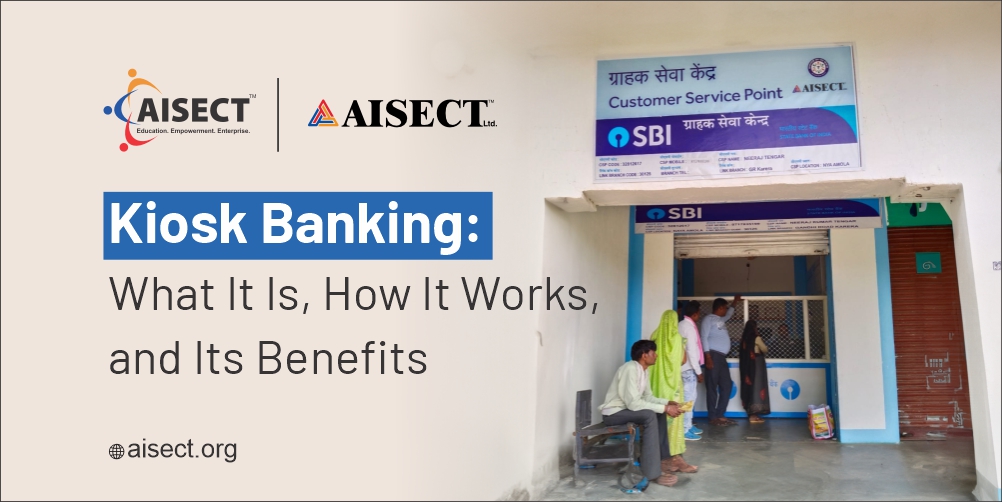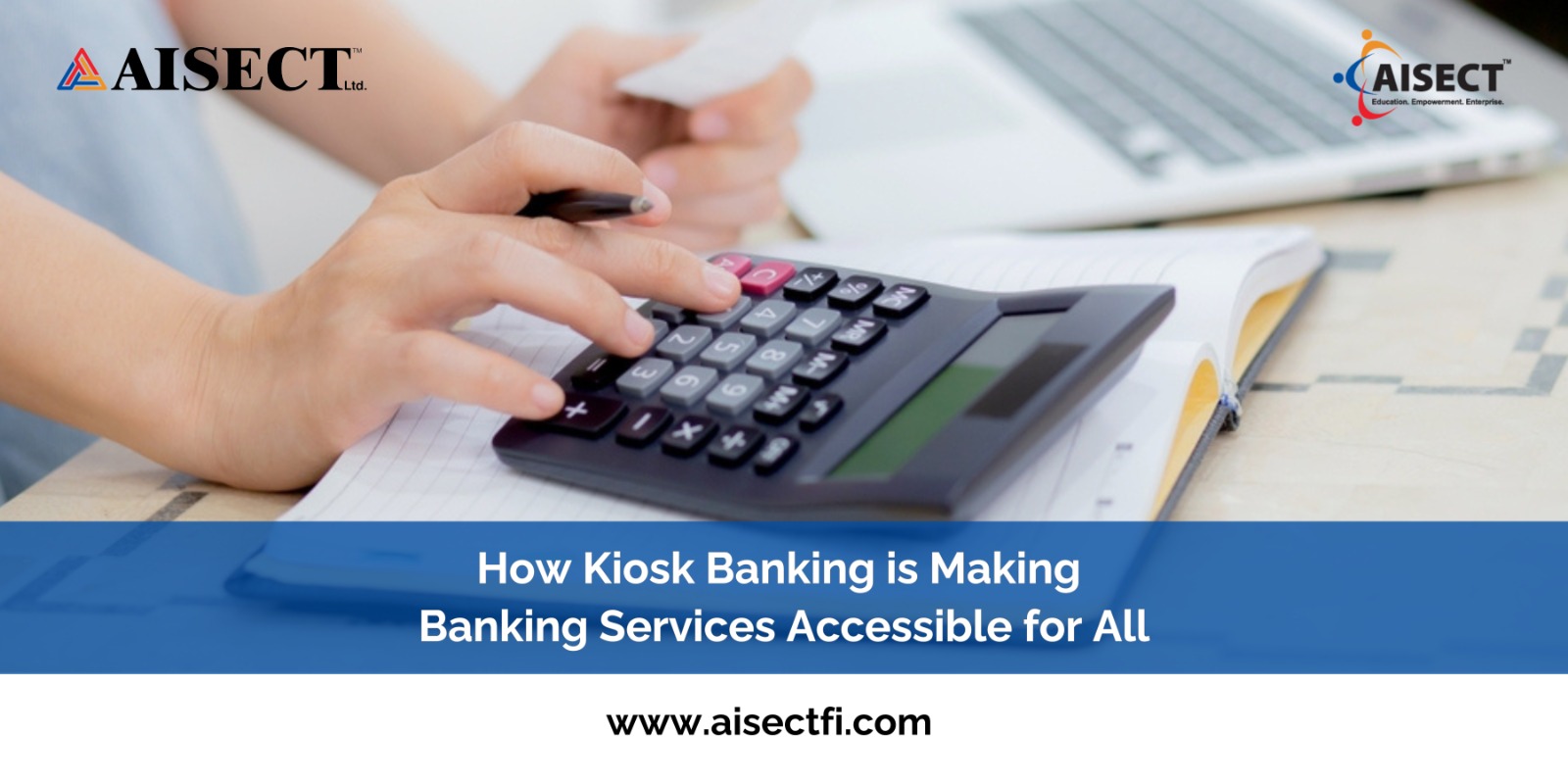Introduction
Do you know, as per a World Bank report India’s financial inclusion rate rose from 25% in 2008 to over 80% among adults in the past 6 years?
AISECT is a social enterprise operational in India with a mission to offer skill-based services, education and training to underserved communities. One of its most notable endeavours is AISECT FI which is responsible for fostering financial inclusivity among rural and disadvantaged populations within India.
The initiative encompasses a wide variety of financial services including micro-insurance, remittance services, loans and savings accounts. This primarily targets individuals living in underprivileged and remote areas. To execute these services in an effective manner, AISECT Financial Inclusion collaborates with a wide range of partners, from microfinance institutions to banks. The central objective of AISECT FI is the empowerment of people through the provision of access to fiscal services. It is responsible for enhancing their financial literacy while promoting fiscal self-sufficiency. This concerted effort aims to alleviate poverty and stimulate economic growth within underprivileged and rural communities.
AISECT FI began its journey in 2007 as a part of a broader commitment to the AISECT group to drive social and economic development in marginalised communities throughout India. The inception of the initiative was driven by the aim of providing fiscal services to individuals who lacked access to formal banking systems. In its initial days, AISECT FI collaborated with local banks to provide fundamental banking services to the rural population such as remittance, micro-insurance, and savings accounts. However, the services being offered evolved, expanding its offerings to include microfinance services including loans to help individuals and small businesses in credit access.
Comprehending AISECT’s Inclusive Initiatives
According to statistics, India’s financial inclusion index has improved to 56.4% from 53.9 in the previous year 2021.
AISECT Financial Inclusion works as a BC (Business Correspondent) and BF (Business Facilitator) to partner with financial institutions and banks to provide banking services to the underprivileged and rural population in India.
- Partnering with Financial Institutions and Banks: AISECT Financial Inclusion partners with financial institutions and banks to provide fiscal services to underserved communities. These partners include nationalised banks, RRBs (Regional Rural Banks), cooperative banks and microfinance institutions.
- Establishing Banking Outlets: AISECT Financial Inclusion is responsible for establishing banking outlets in remote and rural areas where people do not have access to formal banking services. These banking outlets are generally located in AISECT training centres, which are present in more than 25,000 villages across India and urban areas.
- Provision of Fiscal Services: AISECT FI also helps in the provision of financial services to its consumers, including savings accounts, remittance services, micro-insurance and microfinance services such as loans.
- Financial Literacy: AISECT FI also helps in providing financial literacy training to its consumers to help them comprehend financial concepts, manage finances better and make informed decisions about their fiscal future.
- Technology-enabled services: AISECT Financial Inclusion leverages technology to provide services to its consumers.
AISECT Financial Inclusion provides a range of fiscal services to the underprivileged and rural communities in India which include:
- Savings Account: AISECT FI provides savings accounts to its consumers which allows them to save money conveniently and securely.
- Remittance Services: It also offers remittance services that enable consumers to receive and send money easily and quickly.
- Micro-Insurance: The initiative is also responsible for providing micro-insurance services such as life insurance and health insurance to protect its consumers from unexpected events.
- Microfinance Services: It provides microfinance services such as loans to help small businesses and individuals access credit.
In addition to these core services, AISECT FI also provides financial literacy training programs to its consumers which enables them to make informed decisions about their finances and manage money in an effective manner. AISECT FI also leverages technological advancements to provide services to its consumers including mobile-based services such as mobile wallets and mobile banking which enables consumers to access financial services in a convenient way.
Expected Revenues for AISECT’s Business Correspondents
A business correspondent or customer service point is generally responsible for customer acquisition and delivery of services, and customer authentication and it also handles cash if needed. The business correspondents (BCs) play a pivotal role in the overall functioning of AISECT FI as they are an integral part of the initiative. These BCs are generally rural entrepreneurs which enables community development in remote and rural areas.
If the BCs follow the targets prescribed by AISECT and work effectively, an average monthly income of 10,000 can be earned in the beginning. Rural entrepreneurs who perform well can even earn up to Rs 50,000 to Rs 60,000.
Empowering Communities Through Financial Inclusion
The organisation has worked effortlessly to bridge the gap between the rural population and fiscal institutions. They have done this by the provision of access to credit as well as other fiscal services. The impact of AISECT FI can be seen in various ways:
- Increased financial literacy: AISECT FI has played a crucial role in increasing financial literacy in rural areas by providing training and education on financial services and products. AISECT FI has helped in the increment of financial awareness and understanding among rural residents which empowers them to make informed financial decisions.
- Employment generation: The organisation’s efforts to promote entrepreneurship and the development of small businesses have also led to the creation of jobs in rural areas. AISECT FI has helped stimulate economic growth in these regions.
Conclusion
In conclusion, AISECT FI stands as a buoy of change, fostering financial inclusivity in India’s underserved and rural communities. Over the years, its dedicated efforts have critically contributed to the nation’s improved financial inclusion index which now stands at an impressive 56.4%. through partnerships with banks and financial institutions, the establishment of banking outlets in rural areas and the provision of a wide spectrum of financial services, AISECT FI has not only provided access to formal banking but also empowered individuals with financial literacy. AISECT’s journey exemplifies a holistic approach to financial inclusivity, reflecting a commitment to socio-economic development in India’s most vulnerable communities.



